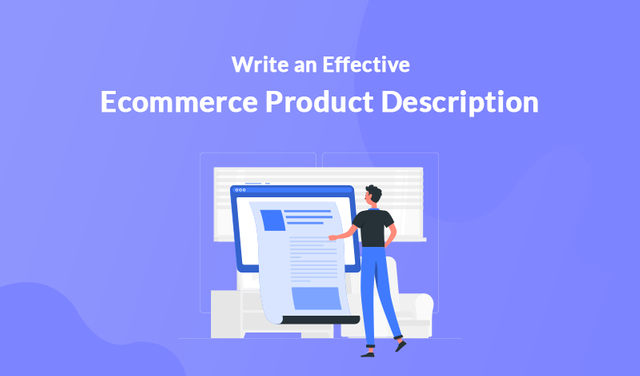
When you’re about to decide which product you want to buy, what kind of information are you looking for?
Chances are that the first thing you’re searching for is the description of the product you’re interested in. And it’s completely understandable — how else can you find all the relevant product information in one place?
Product descriptions are an essential part of a sales funnel, especially in ecommerce. When buying products online, customers need as much information as they can get, and if an ecommerce product descriptions fails to deliver that, it will negatively affect your entire sales funnel.
Reportedly, 50% of shoppers have returned items they bought online because they didn’t match the product descriptions. So, if you’re losing customers, bad e-commerce product descriptions might be the ones to blame.
But what does it take to write an effective ecommerce product descriptions that sells?
Today we are going to answer this question and discuss four crucial steps that will help you achieve this goal.
1. Start by Defining Your Buyer Personas

We’ll start with the basics — building an e-commerce buyer persona. Although it will hardly reflect a real-life person, your buyer persona is still very important to help you better understand your customer’s needs and expectations and will be the foundation of your e-commerce product descriptions.
There are several main characteristics that should be present in the description of an e-commerce buyer persona:
>General information. Start your description with an overview of who your buyer persona is, where they live, what they do. You can also add their needs and challenges connected to your product.
>Here, you need to outline the job title and overall work experience, income, as well as age, gender, location, and marital status.
>Complete the description of your e-commerce buyer persona with information about their hobbies, goals, dreams, needs, problems, and obstacles. Wrap up by saying how your product can become a solution that meets certain needs of your customers.
As a result, you should have something like this:
How can all this information benefit your ecommerce product descriptions and help boost sales?
For starters, defining an e-commerce buyer persona will make your product descriptions more targeted. A 30-year-old freelancer from California will have different product needs compared to a 50-year-old maintenance worker from Oregon, even though they might have the same interest in jogging and better sports apparel.
First, the sports apparel that they will get should be appropriate for their physical shape. Besides, the weather in both states is very different, so you also need to keep that in mind.
Addressing these needs in your product descriptions will make them more appealing to your target audience. They will see your product more as a solution to their needs, which will make it more appealing to them.
2. Optimize Keywords for Search Intent

The days when mindless keyword staffing helped your product get to the top of search results are long gone.
Today, you need to give more thought to which keywords you’re selecting for your e-commerce product descriptions according to the intent of your customers.
Search intent is the reason why people look for certain information online. Based on these reasons, we can single out four main types of search intent:
>Informational — a person is looking for more information on a particular topic. For instance, the keyword Nike shoes can indicate that a searcher is looking for general information about this product online.
>Navigational — a person is looking for a particular online page. For example, if you enter Amazon home décor in the search bar, the first webpage will direct you to the respective section of the Amazon website.
>Transactional — a person wants to make a purchase. Examples of keywords with such intent can include Nike shoes buy, Amazon coupon, Spalding ball cheap, etc.
>Commercial investigation — a person wants to compare information about different products before buying. Keywords with the commercial investigation intent can include Nike vs. Adidas, Kitchen Aid review, best hair extensions,
So, let’s say your target buyer persona is looking for facial masks for kids made in the United Kingdom on Etsy using the keyword kids face masks handmade UK. If you’re selling on this platform, you should include the same keyword in your product description if you want to optimize it for the same search intent:
If you successfully detect the intent with which your customers are looking for your product, it will also help you get more customers to your e-commerce store. However, be careful when including keywords optimized for the type of search intent that’s not relevant to your product description.
How to optimize keywords for search intent?
To make your e-commerce product descriptions focused more on certain a certain type of search intent, you can do the following.
First, check out the People Also Ask section of Google results after entering the main keyword of your interest:
In the image above, you can see that this section of Google search results provided us with keyword options optimized for three out of four main types of search intent. Thus, this approach is quite effective in helping you diversify the keyword list for your e-commerce product descriptions.
Tip: you can narrow down these search results even more if you try a local search by adding a keyword focused on geolocation. It can be especially useful for online businesses that sell their products only locally.
One more way to find relevant keywords optimized for search intent is by browsing online forums like Quora and Reddit. There you can see which information related to your keyword people are usually looking for:
This is called empathy research, and it can help you select keywords that will match the needs and expectations of your customers precisely.
Read More: https://www.hiddentechies.com/blog/ecommerce-tips/effective-ecommerce-product-descriptions/